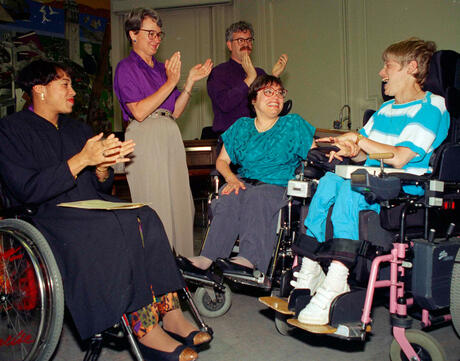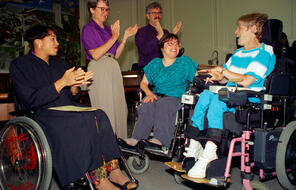
Disability Rights and the Legacy of Judy Heumann’s Activism
At a Glance
Language
English — USSubject
- Advisory
- English & Language Arts
- Social Studies
Grade
6–12- Democracy & Civic Engagement
- Equity & Inclusion
Overview
About This Mini-Lesson
On March 4, 2023, Judy Heumann passed away, after a lifetime of activism on behalf of the disability rights movement. This mini-lesson helps students learn about her life and legacy and explore ways to continue to advance disability rights. Each activity can be used on its own or taught in any combination best suited to your students.
Activities
Activities
Materials and Downloads
Resources from Other Organizations
Unlimited Access to Learning. More Added Every Month.
Facing History & Ourselves is designed for educators who want to help students explore identity, think critically, grow emotionally, act ethically, and participate in civic life. It’s hard work, so we’ve developed some go-to professional learning opportunities to help you along the way.
Exploring ELA Text Selection with Julia Torres
On-Demand

Working for Justice, Equity and Civic Agency in Our Schools: A Conversation with Clint Smith
On-Demand

Centering Student Voices to Build Community and Agency
On-Demand















